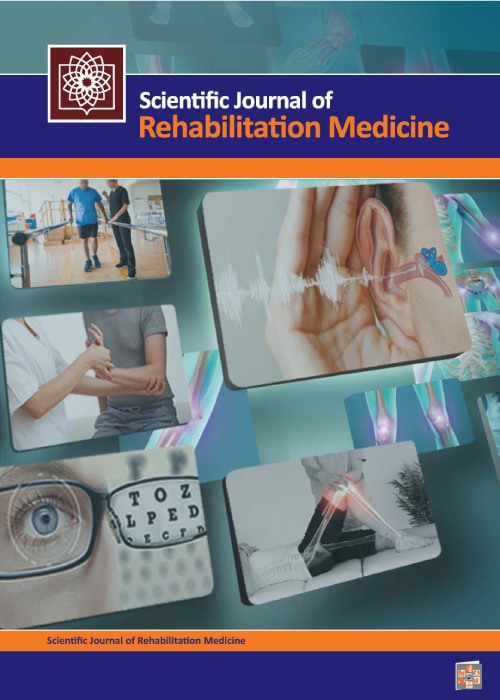Effect of One Stage of Exhaustive Local Fatigue on Mechanical Parameters of Lower-Limb Joints during the Single-Leg Landing of Semi-Professional Sportsmen
Author(s):
Article Type:
Research/Original Article (دارای رتبه معتبر)
Abstract:
Background and Aims
Performance of an athlete reduces as the time of activity increases; consequently, his landing quality is influenced by fatigue. In particular, fatigue has effects on the sportsman’s control posture and the biomechanics of his lower limbs. Moreover, landing puts more stress on these joints than jumping does, and leads to much more possibility of injury. The main objective of the present study was to investigate the effect of one stage of exhaustive local fatigue on the mechanics of the joints of the lower limb in semi-professional sportsmen during their single-leg landing.Materials and Methods
A total of 30 young, semi-professional basketball players in Alborz, Iran, aged between 16 and 26 years, participated in the study. The biomechanical data were recorded using motion analyzer and force plate tools. To process the collected data, the numerical computing environment MATLAB was employed to extract the angles of the lower limb joints when the foot touches the ground, the maximum flexion of the knee, and the maximum normal force in the three planes of motion. The descriptive statistics is based on the mean and the standard deviation of data and the test of normality is based on the Shapiro-Wilk test. Homogeneity of data was tested using Levene’s test. The collected sets of data were compared using the repeated measures analysis conducted in SPSS, version 20.0, at the significance level of P≤0.05.Results
The results did not reveal a significant difference between the angles of the ankle and of the knee in sagittal and frontal planes, nor do they show a significant difference in the maximum normal force and the maximum flexion of the knee before and after fatigue (P≤0.05). The results, however, showed a significant difference between the horizontal angular changes of the ankle joint in the maximal flexion of the knee after fatigue (P≤0.000).Conclusion
Fatigue may change the strategy of landing, thereby increasing the likelihood of putting more stress on the lower limb joints, especially the ankle. This may in turn harm the other joints. The horizontal angular change of the ankle joint in the maximal flexion of the knee changes the layout of these joints, particularly the knee. A deeper investigation of the effect of fatigue on the layout of the joints may help one prevent injuries resulting from exhaustive local fatigue.Language:
Persian
Published:
Scientific Journal of Rehabilitation Medicine, Volume:8 Issue: 4, 2019
Pages:
177 to 184
magiran.com/p2092223
دانلود و مطالعه متن این مقاله با یکی از روشهای زیر امکان پذیر است:
اشتراک شخصی
با عضویت و پرداخت آنلاین حق اشتراک یکساله به مبلغ 1,390,000ريال میتوانید 70 عنوان مطلب دانلود کنید!
اشتراک سازمانی
به کتابخانه دانشگاه یا محل کار خود پیشنهاد کنید تا اشتراک سازمانی این پایگاه را برای دسترسی نامحدود همه کاربران به متن مطالب تهیه نمایند!
توجه!
- حق عضویت دریافتی صرف حمایت از نشریات عضو و نگهداری، تکمیل و توسعه مگیران میشود.
- پرداخت حق اشتراک و دانلود مقالات اجازه بازنشر آن در سایر رسانههای چاپی و دیجیتال را به کاربر نمیدهد.
In order to view content subscription is required
Personal subscription
Subscribe magiran.com for 70 € euros via PayPal and download 70 articles during a year.
Organization subscription
Please contact us to subscribe your university or library for unlimited access!


